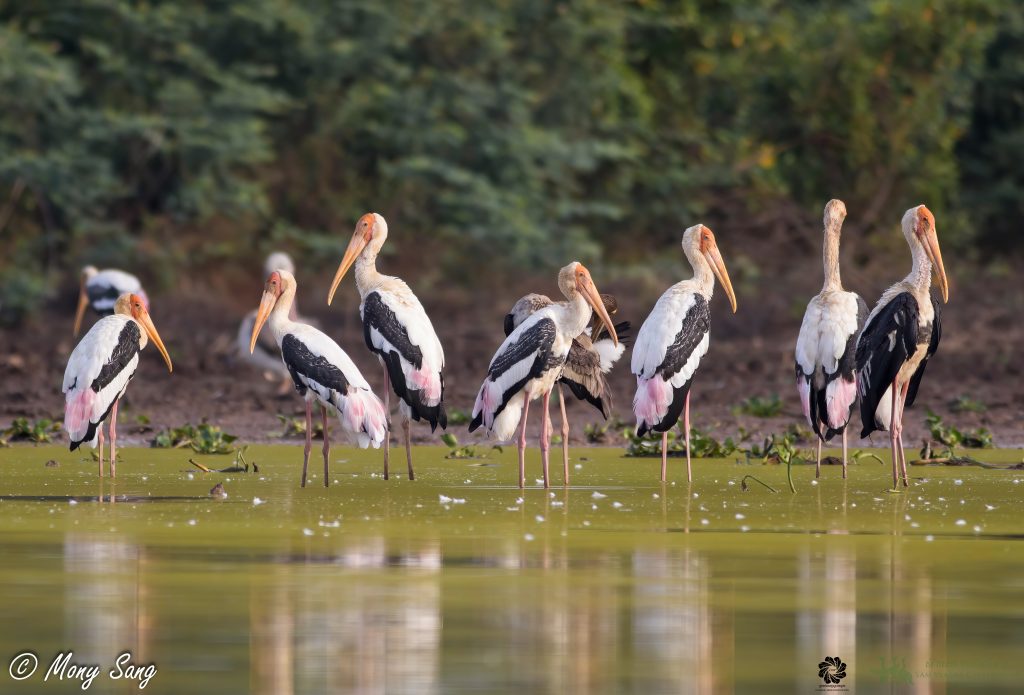The Painted Stork chooses a mate for life❤
Publication Date: 04 March 2022
Source: WoM
Monogamous System: Painted Storks are faithful to their partners since they only have one breeding partner throughout their lives (known as a monogamous species). There is no precise study on how this bird chooses a mating partner. However, there is only one conclusion – female storks prefer males with a larger build.

Breeding: According to rangers and community members who guard Painted Stork nests sites in Prek Toal Ramsar Site, they notice the arrival of Painted Storks in mid-November and early December. The storks come to prepare their nests on large trees in flooded forests such as in the Barringtonia asiatica and Diospyros bejaudii and in areas surrounded by shrubs such as Schoutenia godefroyana and Nauclea officinalis, which can be 3.5 m to 5 m tall. The breeding season begins after the monsoon season, which reduces the risk of their nests being washed away by heavy rains.
Painted Storks breed on trees and live in a flock. According to the wildlife monitoring data at Prek Toal Ramsar Site from 2013 to 2014, the Painted Storks’ breeding nests are scattered around 368 trees and each tree accommodates from 4 to 5 nests. This data has likely changed after the forest fires in Prek Toal flooded forest and around Tonle Sap Lake in 2016.
Their nests are built from plants. A female stork could lay from 3 to 4 eggs and they take around 30 days to hatch. At around 60 days old, the chick starts to fledge and it develops to a more brownish plumage as it ages.
Both male and female Painted Storks share responsibility to protect the clutches and feed the chicks. They both take turns making shade for their chicks by outstretching their wings on the nest because the newly hatched chicks are too weak and fragile to take care of themselves, and have nothing to protect their bodies, which are whitish with grey bills and blackish facial skin, and they are not able to open their eyes yet. When the female is protecting the downy young at the nest, the male goes out to catch some food and water. Sometimes females go out to hunt for food, leaving the male to protect their young ones. These protecting and feeding activities continue until their young fledge and are able to fly out. On average, it will take around 60 days after hatching for chicks to be able to fly.
Read more:
A series of posts about one of Cambodia’s most beautiful waterbirds: The Painted Stork:
The Painted Stork chooses a mate for life:
Feeding, distribution, and lifespan of The Painted Stork:
The Sad story about the threats to the Painted Stork:
